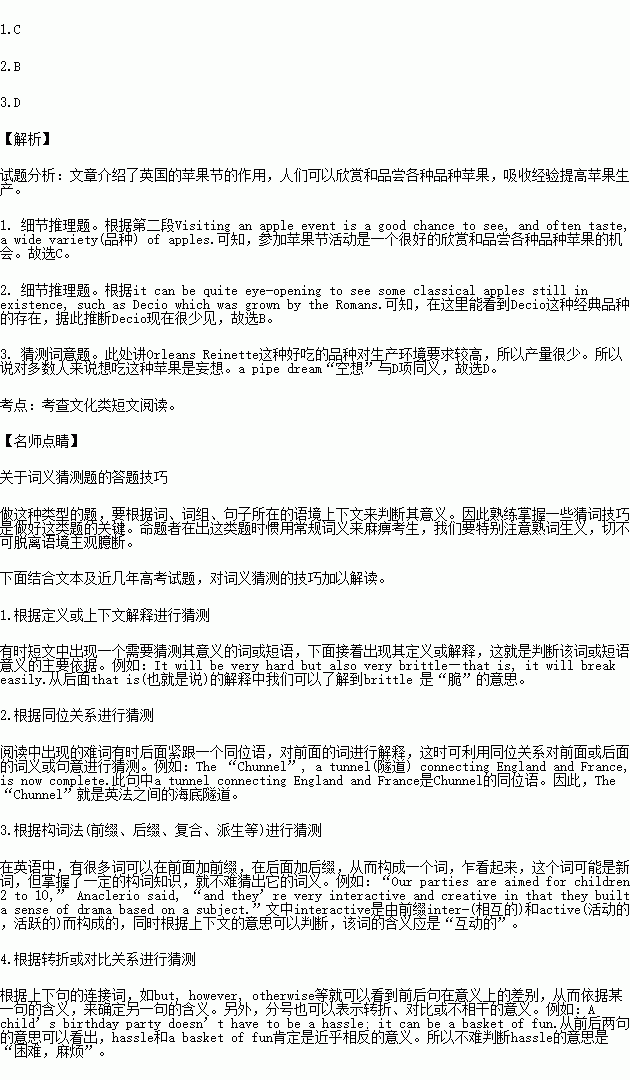题目内容
If you are a fruit grower — or would like to become one —join in Apple Day to see what’s around. It’s called Apple Day but in fact it’s more like Apple Month. The day itself is on October 21, but since it has become popular, events now last through most of October around Britain.
Visiting an apple event is a good chance to see, and often taste, a wide variety(品种) of apples. To people who are used to the limited kinds of apples such as Golden Delicious and Royal Gala in supermarkets, it can be quite eye-opening to see some classical apples still in existence, such as Decio which was grown by the Romans. Although it doesn’t taste of anything special, it’s still worth a try.
There are also varieties developed to suit certain local conditions. One of the very best varieties for eating quality is Orleans Reinette, but you’ll need a warm, sheltered place with perfect soil to grow it, so it’s a pipe dream for most apple lovers who fall in love with it.
At the apple events, you can also meet expert growers and discuss which ones will best suit your conditions, and because these are family affairs, children are well entertained with apple-themed fun and games.
Apple days are being held at all sorts of places with an interest in fruit, including stately gardens and commercial orchards(果园). If you want to have a real orchard experience, visit the National Collection at Brogdale, near Faversham in Kent.
1.What can people do at the apple events?
A. Attend experts’ lectures.
B. Visit fruit-loving families.
C. Taste many kinds of apples.
D. Plant fruit trees in an orchard.
2.What can we learn about Decio?
A. It is a new variety.
B. It is rarely seen now.
C. It has a strange look.
D. It has a special taste.
3.What does the underlined phrase “a pipe dream” in Paragraph 3 mean?
A. A clever idea. B. A selfish thought.
C. A great plan. D. A useless hope.


